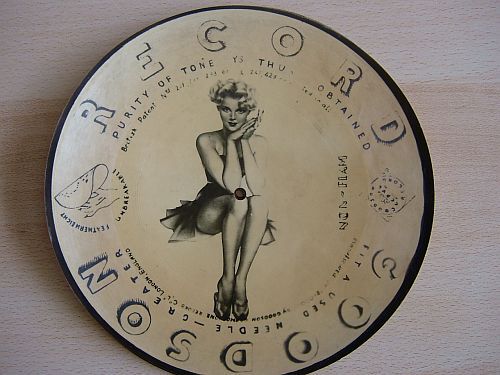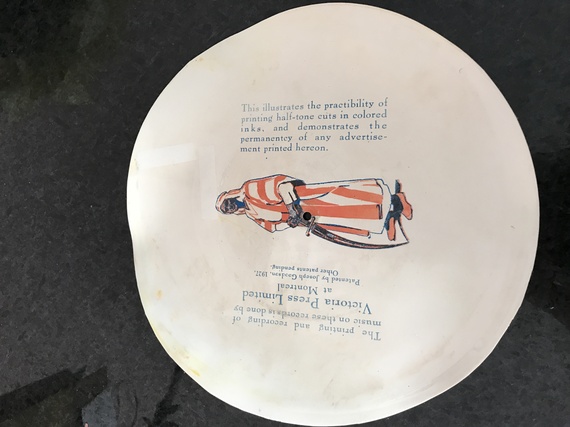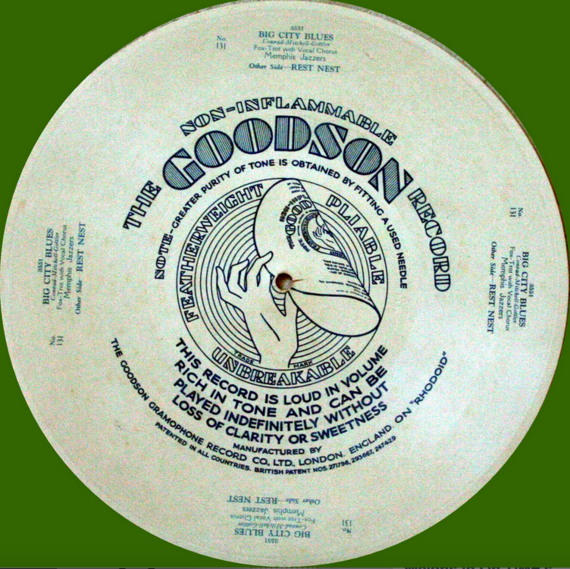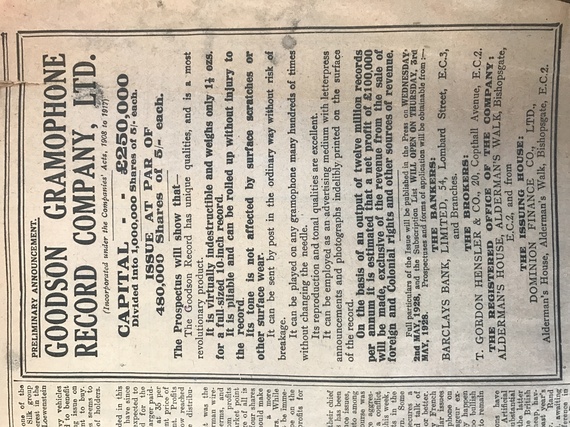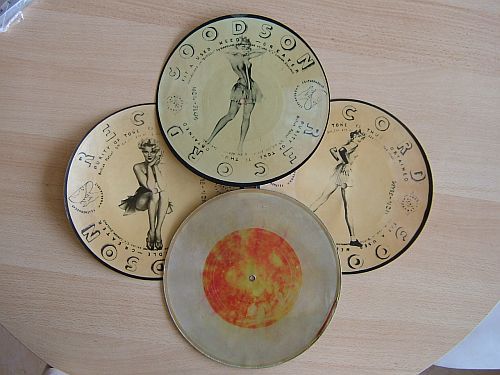![2016-12-21-1482355246-6682649-AAADT_s_Linda_Celeste_Sims_Alicia_Graf_and_Glenn_Allen_Sims_in_Alvin_Ailey_s_Revelations._Photo_by_Andrew_Eccles.2.jpg]()
By Bethany Hopta,
ZEALnyc Contributing Writer, December 22, 2016
The Alvin Ailey American Dance Theater filled the stage of New York City Center on December 11th with exuberance and grace. The program began with
r-Evolution, Dream, choreographed by Hope Boykin, a member of the Company since 2000. The piece was inspired by Ms. Boykin's visit to the National Center for Civil and Human Rights in Atlanta, where she experienced the sermons and speeches of Dr. Martin Luther King Jr. The narration--historical and original writings--voiced by Leslie Odom, Jr., and the original music by Ali Jackson, provide a unique, powerful and jazzy sound. The dancers, a mix of the Company and members of Ailey II glided across the stage, their movements accentuated by the vibrantly colored costumes designed by Hope Boykin. The jewel tones of purple and green and the contrasting white and black provided a stunning visual, their effect magnified by lighting designer Al Crawford. As this is a new work in the repertory, I recommend trying to catch a performance.
Robert Battle's
No Longer Silent, originally choreographed in 2007 for The Juilliard School, premiered with the Ailey Company in 2015. The dancers (clad in black blazers and black pants) move precisely, as if in military formation, first together, and then in groups. The set (designed by Mimi Lien) evokes war with a fence upstage, framing the dancers' movements, but also illustrating a boundary. The lighting (by Nicole Pearce) emphasizes the groupings of dancers and at one point, frames the faces of the dancers in a long horizontal line. A somber piece, it is punctuated by music by Erwin Schulhoff, a Czech composer, and one of the first classically trained composers to find inspiration in jazz music. Schulhoff's musical career ended prematurely; his Jewish heritage caused him to be blacklisted and eventually deported to a concentration camp in which he died from tuberculosis in 1942. The poignant piece is masterful in its storytelling.
Bringing the program to a close was the iconic
Revelations which remains joyful and true and beautiful. Created in 1960 by Alvin Ailey, it is inspired by the music of his childhood--music of church services that evoke a range of emotions: joy, sadness, hopefulness. Divided into three sections, the first,
Pilgrim of Sorrow, is somber. The costumes (designed by Ves Harper) are in earth tones, symbolizing the earth and coming from the earth. The movements are fluid and graceful; "I Been 'Buked" sets the tone of this section. The dancers begin the piece in a cross formation, moving together, then separating in explosive movements and reuniting at the end into the same cross formation. "Didn't My Lord Deliver Daniel" is a fast paced trio of two female dancers and one male dancer, mixing and moving across the stage with energy and grace. The duet, "Fix Me Jesus," danced by Ghrai DeVore and Yannick Lebrun was exemplary.
Take Me to The Water begins with "Processional/Honor, Honor," the music is sprightly and the costumes (also designed by Ves Harper) are all-white, evoking a baptism theme. "Wade in the Water," continues the baptism theme, with blue fabric stretched to give the impression of water. "I Want to Be Ready," a solo piece, danced by Vernard J. Gilmore, was performed with skill and strength.
The final section,
Move, Members, Move begins with "Sinner Man," a powerful trio of male dancers who performed both synchronized movements and solo work with a level of energy and precision that was a joy to watch. The three final pieces, "The Day is Past and Gone," "You May Run On," and "Rocka My Soul in the Bosom of Abraham" features the Company in costumes redesigned by Barbara Forbes; the dress and hats for the ladies and pants, shirts, and vests for the gentlemen mimicked church dress and the gospel hymns and joyful dancing represented the happiness and lightness of spirit that often occurs in this setting and with this music.
The Alvin Ailey American Dance Theater continue performances until the end of December and they are truly not to be missed!
______________________
Alvin Ailey American Dance Theater at New York City Center from November 30-December 31, 2016. Robert Battle, Artistic Director.
r-Evolution, Dream; choreography by Hope Boykin; music by Ali Jackson; narration by Leslie Odom, Jr.; original lyrics by Hope Boykin; excerpts from "The Negro's Complaint" by William Cowper; "False Greatness" by Isaac Watts; " Sonnet 16" by William Shakespeare; "The Best of Whatever You Are" by Douglas Malloch; "If I Can Help Somebody As I Pass Along" by Alma Irene Bazel; "Lift Every Voice and Sing" by James Weldon Johnson; dancers: Matthew Rushing, Jeroboam Bozeman, Rachael McLaren, Renaldo Maurice, Vernard J. Gilmore, Linda Celeste Sims, Daniel Harder, Jacquelin Harris, Michael Francis McBride, Jamar Roberts, Sarah Daley, Megan Jakel, Glenn Allen Sims, Akua Noni Parker, Sean Aaron Carmon. Company members from Ailey II: Tara Bellardini, Lloyd A. Boyd III, Yazzmeen Laidler, Jessica Amber Pinkett, Jacoby Pruitt, Terri Ayanna Wright.
No Longer Silent; choreography by Robert Battle; restaged by Marlena Wolfe; music by Erwin Schulhoff (
Ogelala "Ballettmysterium" Op. 53); dancers: Daniel Harder, Jacqueline Green, Jermaine Terry, Belen Pereyra, Megan Jakel, Samuel Lee Roberts, Michael Francis McBride, Renaldo Maurice, Jacquelin Harris, Elisa Clark, Hope Boykin, Collin Heyward, Yannick Lebrun, Rachael McLaren, Kanji Segawa, Jeroboam Bozeman, Sarah Daley, Samantha Figgins.
Revelations; choreography by Alvin Ailey; traditional music.
Pilgrim of Sorrow: "I Been 'Buked;" music arranged by Hall Johnson; dancers: The Company;"Didn't My Lord Deliver Daniel;" music arranged by James Miller; dancers: Kanji Segawa, Elisa Clark, Ashley Mayeux; "Fix Me, Jesus;" music arranged by Hall Johnson; dancers: Ghrai DeVore, Yannick Lebrum
Take Me to the Water: "Processional/Honor, Honor;" music adapted and arranged by Howard A. Roberts; dancers: Michael Francis McBride, Samantha Figgins, Jeroboam Bozeman, Sean Aaron Carmon; "Wade in the Water;" music adapted and arranged by Howard A. Roberts; "Wade in the Water" sequence by Ella Jenkins; "A Man Went Down to the River" is an original composition by Ella Jenkins; dancers: Jacquelin Harris, Daniel Harder, Constance Stamatiou; "I Wanna Be Ready;" music arranged by James Miller; dancer: Vernard J. Gilmore.
Move, Members, Move: "Sinner Man;" music adapted and arranged by Howard A. Roberts; dancers: Jerboam Bozeman, Jermaine Terry, Sean Aaron Carmon; "The Day is Past and Gone;" music adapted and arranged by Howard A. Roberts and Brother John Sellers; dancers: The Company; "You May Run On;" music arranged by Howard A. Roberts and Brother John Sellers; dancers: The Company; "Rocka My Soul in the Bosom of Abraham;" music adapted and arranged by Howard A Roberts.
Cover: Linda Celeste Sims, Alicia Graf and Glenn Allen Sims in 'Revelations;' photo: Andrew Eccles.
______________________________
Bethany Hopta, a Contributing Writer for ZEALnyc, writes on dance and related performances.
For more features from
ZEALnyc read:
Alvin Ailey's 'Young NY Night' Premiere Dazzles
'Hanna and the Moonlit Dress' Provides an Alternative Holiday Experience
'Exhibitionism--The Rolling Stones' is a 'rocker's Nirvana'
For all the news on New York City arts and culture, visit ZEALnyc
Front Page.
-- This feed and its contents are the property of The Huffington Post, and use is subject to our terms. It may be used for personal consumption, but may not be distributed on a website.
